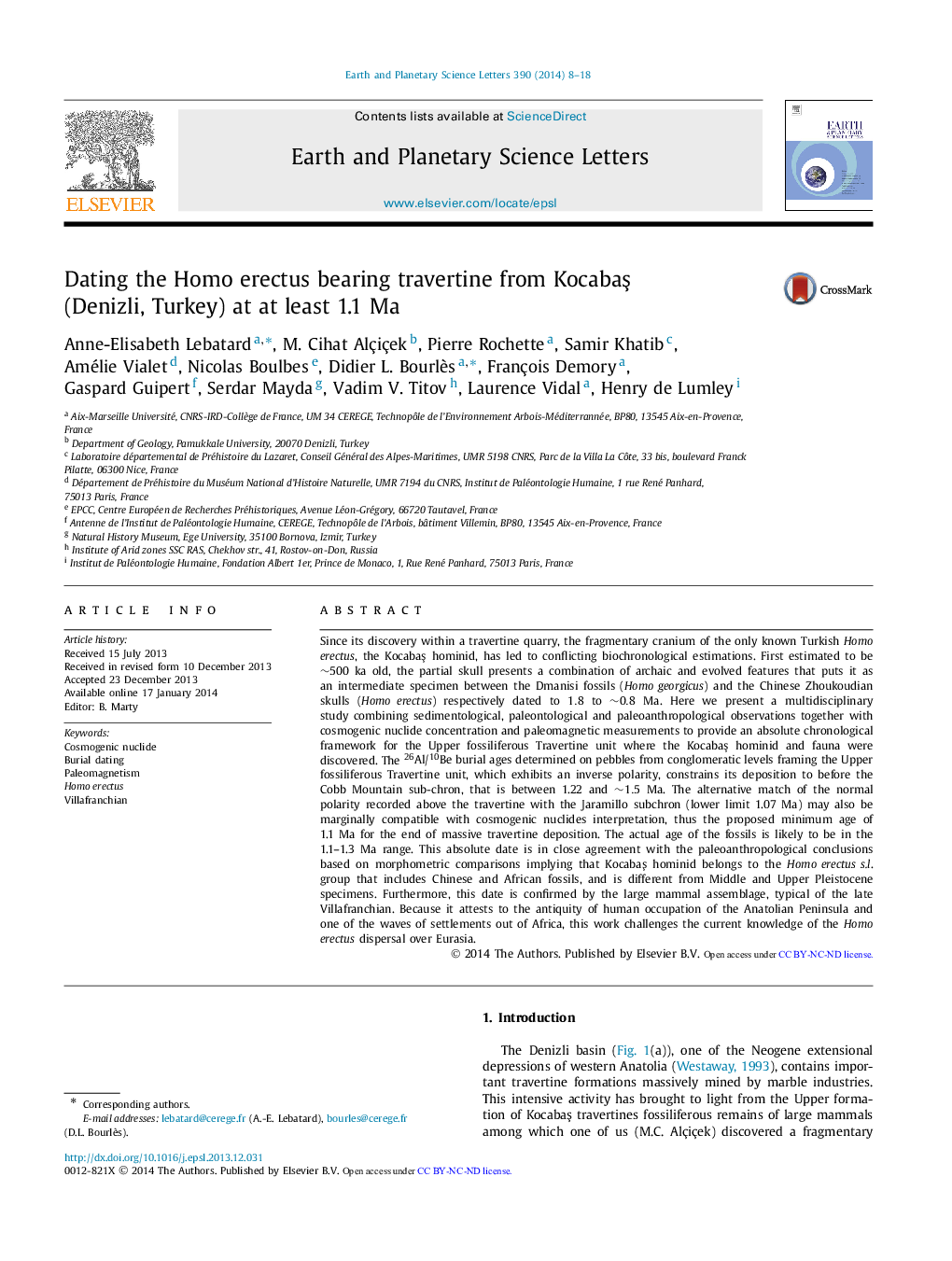| کد مقاله | کد نشریه | سال انتشار | مقاله انگلیسی | نسخه تمام متن |
|---|---|---|---|---|
| 6429568 | 1634766 | 2014 | 11 صفحه PDF | دانلود رایگان |

- First combined cosmonuclides and paleomagnetic dating of a travertine sequence.
- Chronological framework determination of the KocabaÅ hominid (1.1-1.3 Ma).
- Absolute dating of human occupation in the Anatolian Peninsula.
- Denizli locality on the way between Dmanisi and Western and Southern Europe.
Since its discovery within a travertine quarry, the fragmentary cranium of the only known Turkish Homo erectus, the KocabaÅ hominid, has led to conflicting biochronological estimations. First estimated to be â¼500ka old, the partial skull presents a combination of archaic and evolved features that puts it as an intermediate specimen between the Dmanisi fossils (Homo georgicus) and the Chinese Zhoukoudian skulls (Homo erectus) respectively dated to 1.8 to â¼0.8Ma. Here we present a multidisciplinary study combining sedimentological, paleontological and paleoanthropological observations together with cosmogenic nuclide concentration and paleomagnetic measurements to provide an absolute chronological framework for the Upper fossiliferous Travertine unit where the KocabaÅ hominid and fauna were discovered. The 26Al/10Be burial ages determined on pebbles from conglomeratic levels framing the Upper fossiliferous Travertine unit, which exhibits an inverse polarity, constrains its deposition to before the Cobb Mountain sub-chron, that is between 1.22 and â¼1.5Ma. The alternative match of the normal polarity recorded above the travertine with the Jaramillo subchron (lower limit 1.07 Ma) may also be marginally compatible with cosmogenic nuclides interpretation, thus the proposed minimum age of 1.1 Ma for the end of massive travertine deposition. The actual age of the fossils is likely to be in the 1.1-1.3 Ma range. This absolute date is in close agreement with the paleoanthropological conclusions based on morphometric comparisons implying that KocabaÅ hominid belongs to the Homo erectus s.l. group that includes Chinese and African fossils, and is different from Middle and Upper Pleistocene specimens. Furthermore, this date is confirmed by the large mammal assemblage, typical of the late Villafranchian. Because it attests to the antiquity of human occupation of the Anatolian Peninsula and one of the waves of settlements out of Africa, this work challenges the current knowledge of the Homo erectus dispersal over Eurasia.
Journal: Earth and Planetary Science Letters - Volume 390, 15 March 2014, Pages 8-18